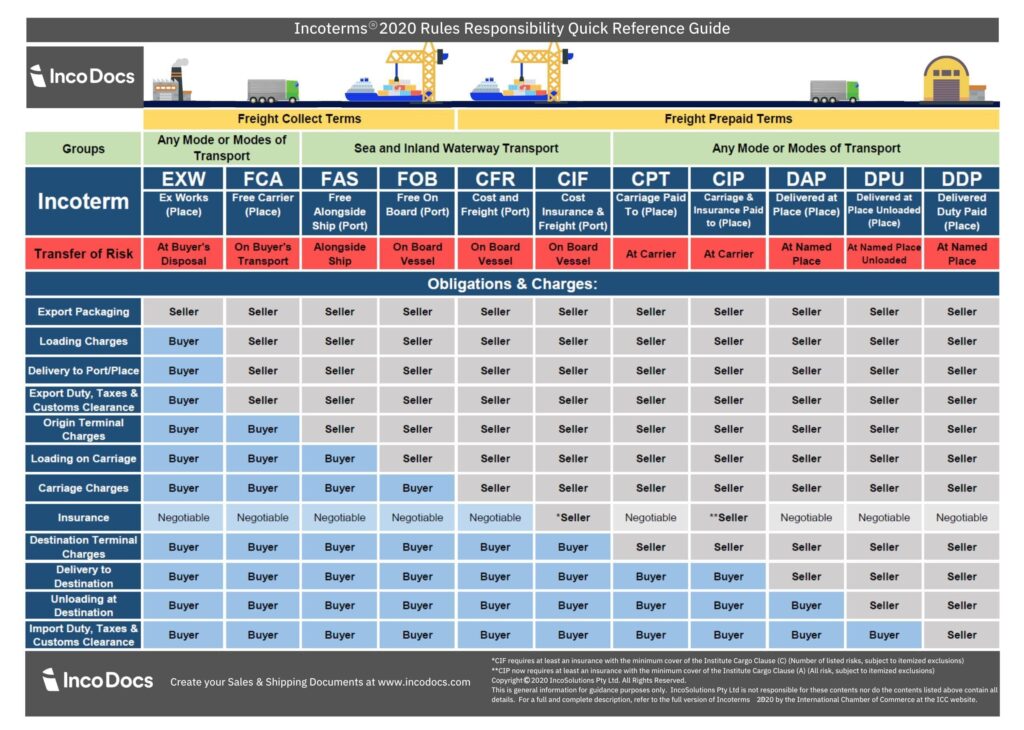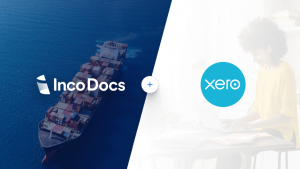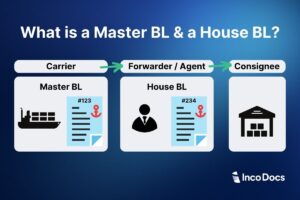International Shipping
International shipping plays a crucial role in determining the total cost of a product. This total cost, known as the landed cost, encompasses not just the purchase price of the product but also transportation fees, customs duties, and taxes incurred during shipment. Given its significant impact, it is essential to understand how strategic shipping decisions can help manage and reduce these costs effectively.
In this guide, we’ll explore practical tips to help you save money on international shipping. By implementing these strategies, you can keep your business competitive in the global market.
Bargain for Lower Shipping Costs
Negotiating better shipping rates can significantly impact a business’s bottom line, especially for those who ship in high volumes. Here’s how companies can strategically approach this to secure more favorable terms:
1. Leverage Shipping Volume:
Businesses can use shipping volumes as a bargaining chip. Demonstrating the consistent business they bring can be a powerful incentive for carriers to offer better rates.
- Utilize high shipping volumes to show your business’s value.
- Secure better rates through demonstrated consistency.
2. Research Market Rates:
Being informed about the current market rates is essential. Businesses should research what various carriers charge to prepare for negotiations effectively.
- Investigate current shipping rates among competitors.
- Strengthen your negotiating position by showing awareness of alternative options.
3. Build Strong Relationships:
A robust relationship with carriers can ease the negotiation process. Regular communication and updates about shipping needs can foster mutual trust and cooperation.
- Maintain regular contact with your carrier’s account manager.
- Inform them promptly of any changes in your shipping requirements.
4. Highlight Loyalty and Volume:
Long-term loyalty and consistent shipping volumes can make a business a valuable customer to carriers, potentially leading to more favorable rates.
- Emphasize loyalty and consistent business to underline your importance as a customer.
- Use this as leverage to negotiate better terms.
By focusing on these strategic areas, businesses can improve their negotiation outcomes and secure better shipping rates, contributing to overall operational efficiency and cost savings.
Reduce Package Size and Weight
Reducing package size and weight can lower your shipping costs significantly. Smaller, lighter packages are cheaper to transport and take up less space. Use the smallest box that fits your product securely to reduce shipping fees. Make sure the box is sturdy enough to protect the contents.
For non-fragile items, consider using padded mailers. They are lighter and often cheaper than boxes but still provide adequate protection. Avoid excess packaging like too much bubble wrap. Use lightweight materials such as corrugated cardboard and recyclable plastics. Regularly review and optimize your packaging process to ensure continuous savings over time.
Purchase Packaging Materials in Bulk
Buying packaging materials in bulk can save your business a lot of money. Bulk purchasing offers significant discounts, lowering the cost per unit. It also ensures you always have enough supplies, preventing shipping delays due to a lack of materials. Consistent supply availability helps maintain a smooth shipping process.
To get the best deals, compare prices from different suppliers. Look for wholesale suppliers that offer bulk discounts. Online marketplaces and packaging companies often have competitive rates for large orders. Consider joining a buying group to pool resources and secure better deals. Negotiate with suppliers for lower prices on regular, large orders. Building a good relationship with your supplier can lead to better terms and discounts.
Use Poly Bags for Light Items
Poly bags are a cost-effective way to ship non-fragile items. They are lightweight and compact, which helps reduce shipping fees. They work well for clothing, accessories, and small electronics, providing adequate protection without the bulk of boxes.
When using poly bags, ensure they are durable and tear-resistant. Seal them securely with strong adhesive strips or tape. Avoid overstuffing to prevent tears, and choose the right size for a snug fit. Padded poly bags offer extra cushioning for items needing more protection. Using poly bags can streamline your shipping process and save money.
Opt for Flat-Rate Shipping Solutions

Flat-rate shipping can save you money, especially on heavy shipments. You pay a fixed price based on package size, not weight, which is great for shipping heavy items. Carrier-provided packaging materials are another benefit. Using free flat-rate boxes and envelopes from carriers can reduce packaging costs.
Flat-rate shipping simplifies the shipping process. You don’t need to calculate costs based on weight or distance, making budget management easier. It can also lead to faster delivery times, as carriers often prioritize flat-rate packages. This reduces transit times and improves customer satisfaction.
Choose Regional Delivery Services
Using regional carriers can significantly lower your shipping costs. These carriers often offer lower rates than national or international companies. They focus on a smaller area, leading to better prices and faster deliveries.
Regional carriers provide more personalized service. They know local routes and regulations, ensuring smooth deliveries. This localized knowledge reduces delays and improves customer satisfaction.
When selecting a regional carrier, start by researching options in your target area. Compare rates, delivery times, and reviews. Ensure the carrier covers all your desired shipping zones. Some carriers may only serve specific regions, so verify their coverage.
Check for additional services the carrier offers, such as same-day delivery or specialized handling. These can enhance your shipping options. Evaluate the carrier’s tracking capabilities for real-time updates. Reliable tracking improves transparency and maintains customer trust.
Set Up Local Fulfillment Centers
Setting up local fulfillment centers can reduce shipping costs and delivery times. Warehouses in key markets store products closer to customers, speeding up delivery and cutting transportation expenses.
Local centers meet customer expectations for fast delivery. Customers prefer quick shipping. Shorter distances enable same-day or next-day delivery, boosting satisfaction and loyalty.
To establish a local fulfillment center, identify key markets. Analyze sales data to find high-demand areas. Choose warehouse locations near these markets for maximum efficiency.
Select a suitable warehouse space considering size, accessibility, and cost. Ensure it has adequate storage capacity and can handle your shipping volume. Invest in warehouse management systems to streamline operations, track inventory, and manage orders efficiently. Good technology improves accuracy and reduces errors.
Implement Prepaid Shipping Strategies
Prepaid shipping can keep your costs low and simplify the shipping process. By paying for labels in advance, you secure better rates and streamline operations. Carriers often offer significant discounts for prepaid shipments, leading to substantial savings, especially for large volumes.
To start, estimate your shipping needs by analyzing your data. Purchase prepaid labels from your carrier, negotiating the best rates based on your volume. Integrate these labels into your process using shipping software for accuracy. Train your staff to apply labels correctly to maximize benefits. Regularly review your strategy, adjusting label purchases to ensure you always have enough and continue saving.
Opt for External Shipping Insurance
Third-party insurance offers better coverage than carrier options. It provides full-value reimbursement for damaged or lost shipments. External insurance often has lower premiums and more comprehensive policies.
When choosing a third-party insurance provider, compare rates and coverage. Look for companies with a good reputation and strong customer reviews. Ensure they offer easy claims processes and quick payouts.
Select the Best Shipping Company
Choosing the right shipping company is vital for cost-effectiveness and reliability. Consider factors like delivery speed, rates, and customer service. Research carrier performance through reviews and case studies. Look for companies with a strong track record in handling international shipments.
Explore Shipping Discounts and Programs
Some carriers offer discounts and membership programs to loyal customers. These can significantly reduce your shipping costs. Research and compare programs from different carriers. Look for volume-based discounts or loyalty rewards.
Provide Flexible Delivery Options
Offering multiple delivery speeds can meet various customer needs and reduce costs. Some customers may prefer slower, cheaper shipping. Balancing delivery time and cost helps optimize your shipping strategy.
Choose the Right Pricing Strategy
Different pricing models can impact your shipping costs. Courier rates, flat-rate shipping, and hybrid models all have their benefits. Evaluate which model best suits your business needs and budget. Consider the nature of your shipments and typical delivery destinations.
Assess Shipping Costs by Destination
Shipping rates can vary widely based on destination. Evaluate the costs for different markets. Compare rates from various carriers to find the best deals. This helps you plan and budget more effectively for international shipping.
Maximize Your Shipping Account Usage
Using your shipping account number for inbound shipments can save money. This consolidates your shipping volume and may qualify you for better rates. Integrate this practice into your regular shipping process to maximize savings.
Understand and Utilize Incoterms

Incoterms are essential in international trade. They define the responsibilities of buyers and sellers. Knowing the common Incoterms can save you money and avoid misunderstandings.
Choosing the right Incoterm can reduce shipping costs. For example, using Ex Works (EXW) means the buyer handles shipping from the seller’s location. This can provide clear cost breakdowns and help with budgeting. On the other hand, Free On Board (FOB) splits responsibilities. The seller handles costs until the goods are on the ship or aircraft, and the buyer takes over from there. This can ensure smoother customs clearance and lower costs. Let’s go more indepth of these Incoterms.
Ex Works (EXW) for Cost Transparency
Using Ex Works (EXW) in international shipping can offer clear cost transparency. This Incoterm places the responsibility on the buyer once the goods leave the seller’s premises. This means the buyer controls the shipping process, allowing for better customization and management of costs.
The main benefit of EXW is the clear cost breakdown and control. Buyers can see exactly what they are paying for at each step and arrange the movement of the goods themselves not having to rely on the seller. The buyer bears all risks and costs, including logistics and customs. This can be challenging for those without shipping experience.
Benefits:
- Buyer controls the shipping process, allowing for better customization.
- Clear cost breakdowns for transparency and easier budgeting.
- Easier to compare quotes from different carriers and find the best deals.
- Lower upfront costs for the seller, which can be a selling point.
Drawbacks:
- Buyer bears all risks and costs once goods leave the seller’s premises.
- More responsibility on the buyer for handling logistics and customs.
- Potential higher costs if the buyer lacks shipping experience.
- Requires careful coordination to avoid delays and additional expenses.
Free On Board (FOB) for Shared Responsibility
Free On Board (FOB) is an Incoterm that balances shipping responsibilities between the buyer and the seller. The seller handles costs and risks until the goods are loaded onto the shipping vessel or aircraft. After that, the buyer takes over, managing the transportation and customs processes.
Using the FOB shipping arrangement can streamline customs clearance and reduce costs. This is because both the seller and buyer handle the freight requirements specific to their respective local authorities. Typically, the seller is more familiar with the local customs procedures and has established contacts, which allows them to manage the shipment efficiently until it reaches the export seaport or airport. Once the goods are delivered, the buyer takes over, managing the shipment from the port of export to its final destination. This division of responsibilities leverages the local expertise of each party, ensuring a smoother and potentially more cost-effective shipping process.
Pros:
- Balanced responsibilities between buyer and seller.
- Smooth customs clearance with proper documentation.
- Lower costs if the buyer has good logistics management.
- Clear division of risks and costs.
Cons:
- Requires coordination between buyer and seller.
- Potential for disputes over responsibilities.
- Buyer bears risks after goods are loaded.
- Higher costs if the buyer lacks logistics experience.
Final Thoughts
Navigating international shipping costs is crucial for businesses aiming to maintain profitability. This guide highlights key strategies such as negotiating rates based on volume, leveraging relationships with carriers, and optimizing packaging. These methods not only reduce expenses but also enhance operational efficiency, providing businesses a competitive edge in the global marketplace.
FAQ on Cheaper International Shipping
What is the cheapest international shipping method
The cheapest method is usually ocean freight. It costs less than air freight but takes longer. It’s best for heavy or large shipments that are not urgent. For small packages, postal services or consolidated shipping options are often cheaper. Always compare rates to find the best deal for your needs.
Why is international shipping so expensive right now in 2024
International shipping costs have increased due to supply chain disruptions in particularly the drought that has reduced the number of daily shipments able to move through the Panama Canal. Also, the Red Sea attacks on shipping vessels that have forced carriers to ship around the Horn of Africa instead of using the Suez Canal. Other reasons include higher fuel prices, labor shortages, and increased demand for shipping services. These factors combined have lead to elevated shipping rates for businesses and consumers.







